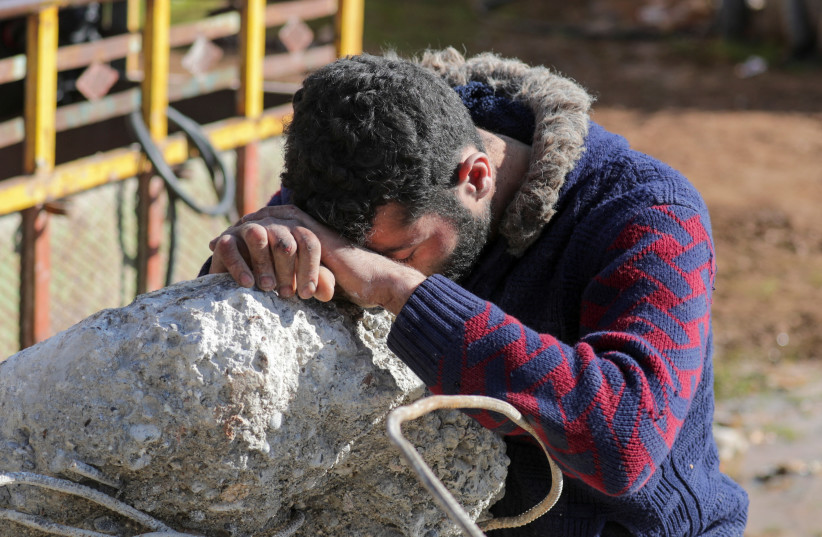Syrian doctor says scale of injuries from earthquake is more devastating than from the war

500 people are entering the hospital daily, but the hospital is running out of medical supplies.
Doctor Mohamad Zitoun spent years treating casualties from the Syrian war but has never experienced anything like the number of injured and the scale of their injuries following Monday's devastating earthquakes that struck Turkey and Syria.
"This is a huge calamity. I lived through shelling and survived massacres. This is totally different, terrifying and horrific," said the 34 year old surgeon from Aleppo, who has worked round the clock since the earthquakes in a hospital in Bab al Hawa by Syria's border to Turkey.
The hospital is in an opposition-held enclave in northwest Syria, an area which bore the brunt of Russian and Syrian bombing during the country's conflict, which killed hundreds of thousands, and where the towns are heavily populated with those who fled other areas of Syria.
"The first massive wave of patients surpassed the ability of any medical team," said the surgeon. The outpatient clinic was turned into a ward and mattresses were laid on the floor as the rooms filled with victims and despairing family members.
"Cases arriving for treatment from shelling and aerial bombing would come one after the other in small waves," recalled Zitoun. But the earthquake has seen 500 victims brought in each day, requiring dozens of operations.
Medics have rushed to treat whole families brought to hospital with head injuries, multiple fractures, spinal cord breaks, organ failure and severe crush injuries.
"Many of the injured die within an hour or two as a result of trauma shock, heart failure or bleeding, especially since the weather is cold and they would have been under the rubble for eleven or twelve hours," he added.
In some hospitals across the devastated region, courtyards have been turned into makeshift morgues where the dead are laid out in rows of body bags and people search for their relatives.
The earthquake wiped out whole families and neighbourhoods. In the nearby town of Besnaya 150 families died and in the town of Jandaris over 89 buildings collapsed with hundreds killed.
Limited resources
Zitoun said the hospital's emergency teams were running out of antibiotics, sedatives, surgical supplies, blood bags, bandages and drips, with the border to Turkey closed.
Supplies across the main hospitals in the area may not last much more than a week with few stocks of medicines having arrived in recent months and a desperate need for the resumption of aid flows from across the border to Turkey.
But there is also widespread devastation on the other side of the border in the Turkish city of Hatay.
"It's a humanitarian catastrophe on both sides," he added
Jerusalem Post Store
`; document.getElementById("linkPremium").innerHTML = cont; var divWithLink = document.getElementById("premium-link"); if (divWithLink !== null && divWithLink !== 'undefined') { divWithLink.style.border = "solid 1px #cb0f3e"; divWithLink.style.textAlign = "center"; divWithLink.style.marginBottom = "15px"; divWithLink.style.marginTop = "15px"; divWithLink.style.width = "100%"; divWithLink.style.backgroundColor = "#122952"; divWithLink.style.color = "#ffffff"; divWithLink.style.lineHeight = "1.5"; } } (function (v, i) { });

